The Whitest White
Solo show at Kunstnerforbundet, Oslo
August 2012
---
He will sense a precipice, an abyss everywhere, no matter where he looks; and experience indeed an incredible horror, fear and sadness, until this fear and sadness shall transform themselves into the joy of the sensing of a new reality. (Tertium Organum, Ouspensky, 1922)
In previous projects, Marte Johnslien has had an “alternative” focus on modernism where so called rational and formal artists like Le Corbusier and Barbara Hepworth have been seen in connection with spiritual and new-religious movements of their times. In the project The Whitest White she is looking closer at parallels between an important part of Norway’s industrial history, the mining corporation Titania AS in Sokndal, Norway, and the Russian Suprematist’s quest for the truth about our existence.
In 1916 it was discovered that the black ilmenite which was found naturally in Sokndal could be processed into “the whitest white” - the pigment titanium white. This pigment has earned a central position in the modern world due to its whiteness, its opaque qualities and its longevity. It is used in plastics, paint, food and medicine to give them a clean, white appearance. In the period between the discovery of the pigment and the production of it for the world market, the history of art was given a landmark in Kazimir Malevich’s modernist piece White on White (1918). The painting is a white monochrome, and can be said to represent the void within us, inspired by among other things the Russian thinker Ouspensky’s ideas on the spiritual dimension.
The Whitest White is an installation of paintings, sculptures and photographs. The photographs are from Titania AS in Sokndal where the mining of ilmenite causes massive interventions in the natural landscape. One of the photos shows the 200 meters deeps opencast mine where the ilmenite can be traced as dark lines in the landscape. Another photo is of the land deposit which lies next to the mine, where millions of tons of fine grained tailings create a man-made desert which grows three meters in height every year. These photos represent a topic that the artist was to recover in the investigation of Suprematist artist’s source thinking - man’s relationship to eternity.
Malevich’s white monochrome can be related to works by the Russian mystics Ouspensky and his master G. I. Gurdjieff. The latter believed that the truth about human existence was a knowledge that had been lost for the modern man. Around 1900 he left Armenia to search for what he named pre-sand Egypt, where he believed records of ancient knowledge were to be found. Marte Johnslien draws in her project lines between Gurdjieff’s idea that the truth is hidden under the deserts of Egypt, to the sand deposits which covers the natural landscape of Sokndal.
Eternity and immortality are extracted elements from the research material, and they form two main pillars in the project. They fuel formal experiments in the gallery space, and the photographs are surrounded by a reconstruction of Malevich’s sarcophagus, an assemblage of veiled canvases, a shelf-like sculpture containing pieces of petrified wood and teak floor tiles, along with a photograph entitled Self-portrait as a Painting. Together, these pieces hint at different ways of tracing the truth - in nature, in the arts or at the depths of ourselves.
---
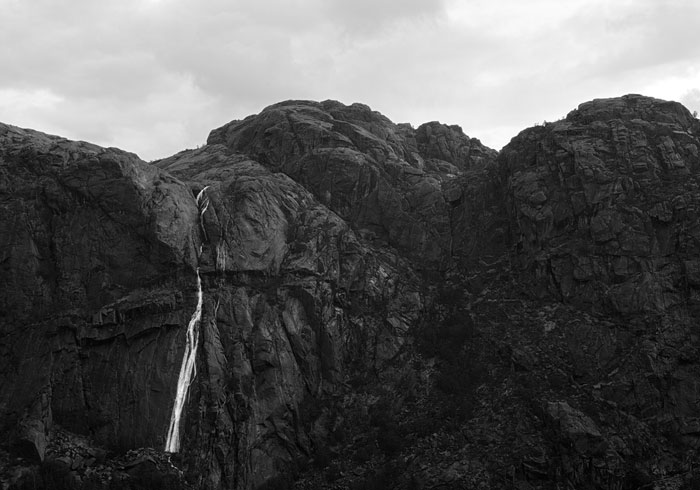
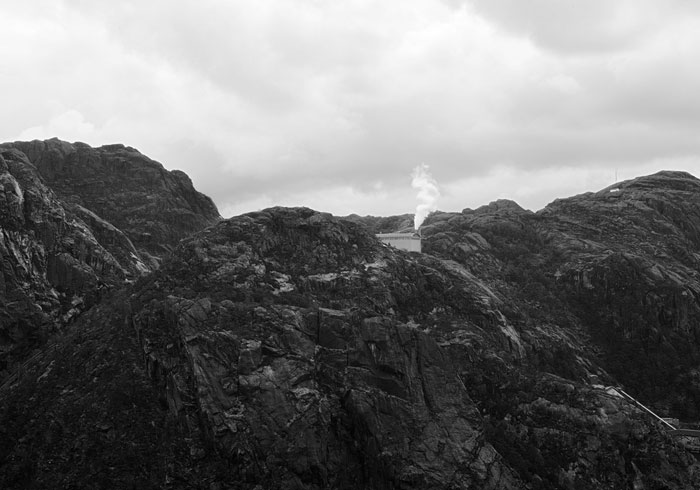
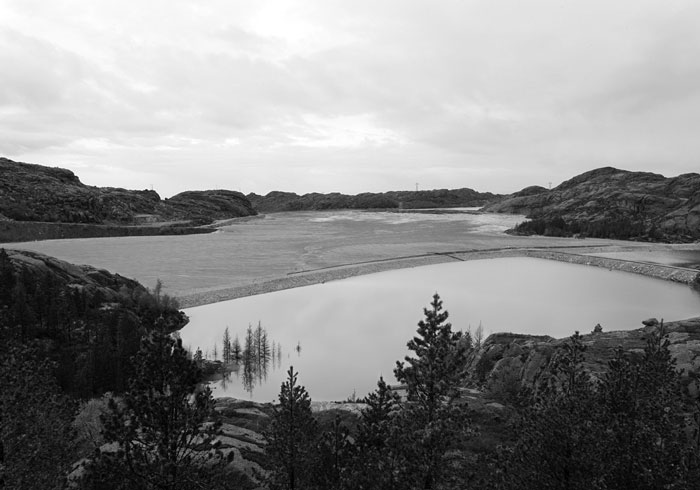
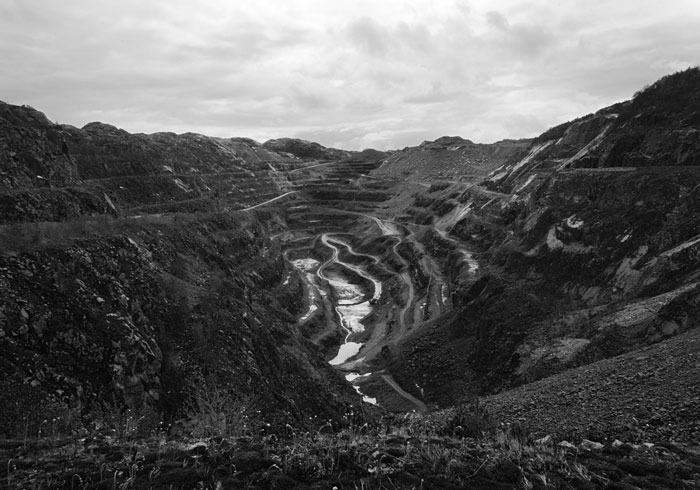
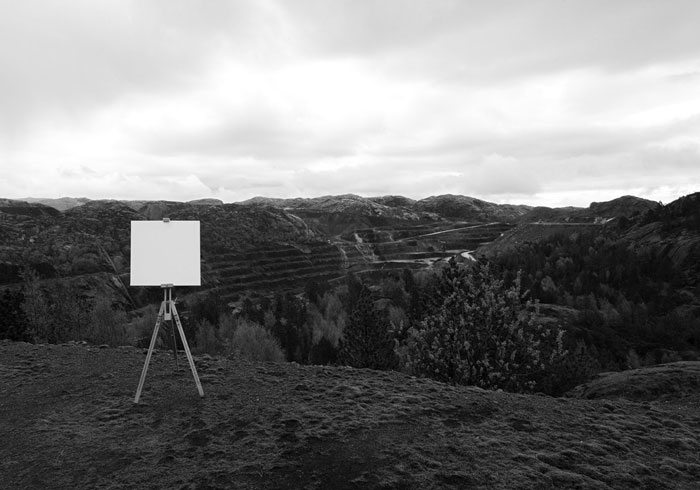
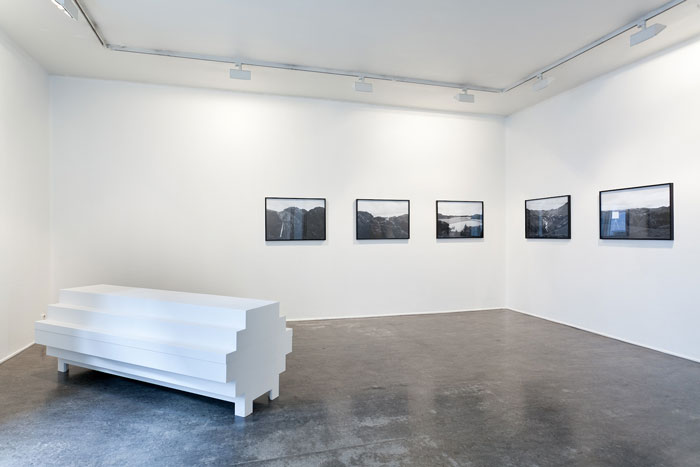
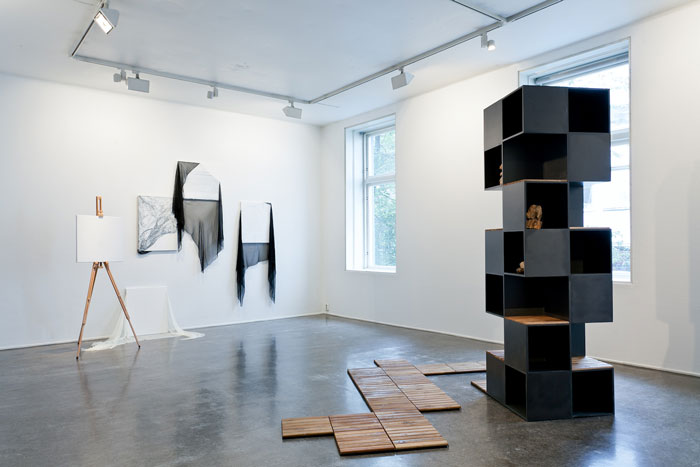

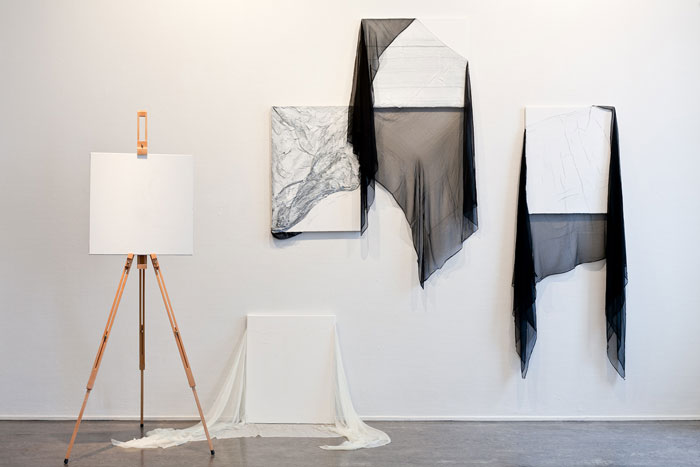
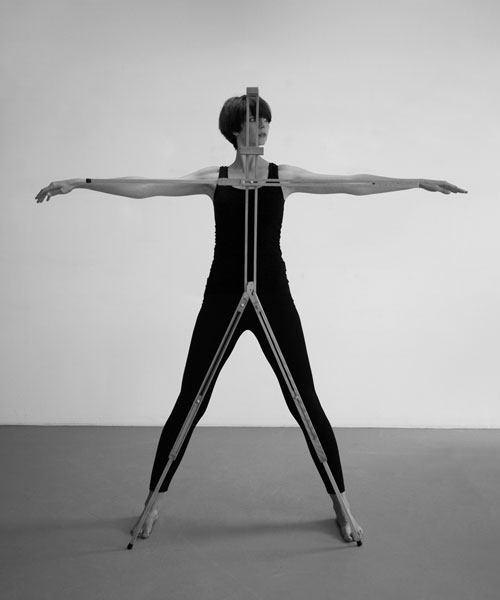
|









